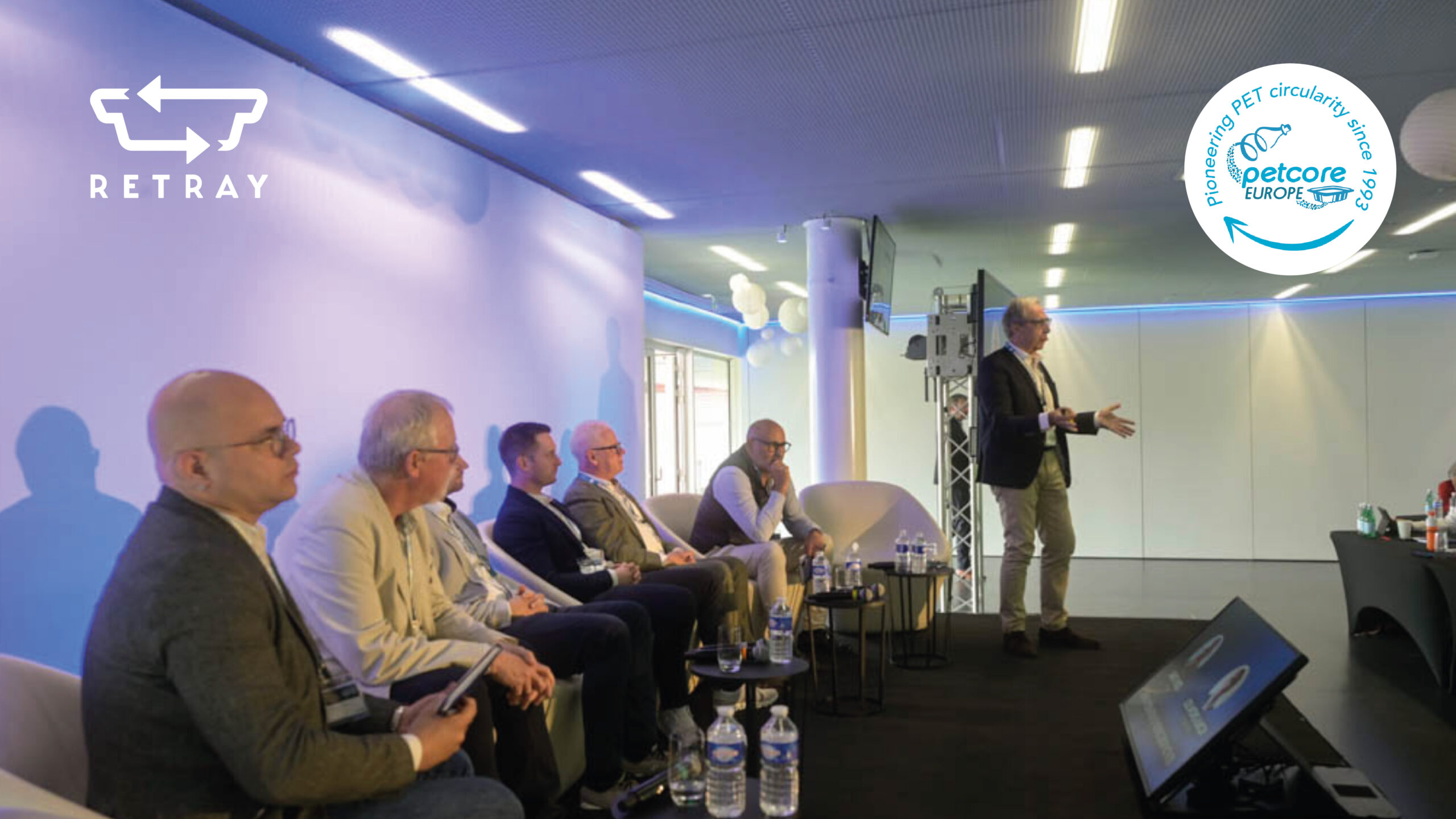Highlights of the Petcore Thermoforms Event DIJON 2025

Mihkel Krusberg – European Commission
Mihkel Krusberg Policy officer DG Environment from the EU, highlighted the vision and policies of the European Commission regarding the recycling of PET thermoformed trays, emphasizing that the focus areas are “design for circularity” and separate waste collection—key aspects in current and future legislative development by the Commission. To this end, the Commission has launched the Circular Economy Act, which will be published in the last quarter of 2026, aiming to ensure safe access to materials and resources for Member States.
To improve tray recycling, Juliette Beaulieu presented the work carried out by CITEO, the French EPR, regarding the collection of PET thermoformed trays to promote and enhance their recycling. Through significant investments, CITEO has undertaken the streamlining and modernization of its sorting centers, including over-separation processes, reaching 26 kt.
To encourage the use of recycled material from post-consumer trays, CITEO assigns value to PET through eco-modulation, where trays containing recycled content from post-consumer trays are rewarded with €350/tn. Combined with the recycled bottle content typically found in thermoformed trays, the bonus can reach €400/tn.
To be eligible for this bonus, the post-consumer recycled content must be certified under criteria currently being studied by either POLYCERT—of which RETRAY and the Ecosense Foundation have been members since early 2025—or Recyclass.
PET Tray Waste Management: Perspectives from Belgium and European Collaboration
Plarebel presented actions and plans to fulfill its mission of working in collaboration with all stakeholders to promote, develop, stimulate, and increase plastic recycling levels in Belgium, ensuring the transition to a circular economy.
Thermoformed Packaging and Recycling Outlook
Report on the state of recycling capacities and short-term recycling prospects in Europe:
After presenting PET recycling data in Europe for 2022, the recycling capacity for thermoformed PET in the same region is expected to reach 234,000 tonnes by 2025.
From Argus Media, he shared his Market Vision for Thermoformed Packaging, highlighting that consumer perception of thermoformed packaging recycling is significantly lower compared to the perception of bottle recycling.
Converters and PPWR: How to Face Future Obligations?
She presented the challenges to overcome in improving the recycling of PET yogurt packaging. Danone will reach 30% recycled PET content in its yogurt packaging in 2025, with the goal of achieving 100% recyclable, compostable, and reusable packaging by 2030.
Situation and Challenges of the Plastic Recycling Industry
Sebastien conveyed the concerns of French plastic recycling companies regarding fair competition with non-EU importers. They advocate for the implementation of equivalent European standards in safety and environmental protection, as well as “mirror” legislation to compete on equal terms.
To achieve this, they support accredited certifications from independent schemes for all materials entering EU borders.
She focused on European regulatory developments in 2024 and upcoming regulations related to food contact materials, pending implementation acts of the PPWR regulation, microplastic pollution reduction, REACH, and end-of-waste status.
Leonor emphasized that recycled PET must comply with Framework Regulation (EC) 1935/2004 regarding BPA safety assessment, which must consider the new TDI recently established by EFSA.
Vincent Colard (remotely) / Sergio Collado – Citeo & Sulayr
Standardization in Thermoformed PET Recycling
Both Vincent and Sergio, from their respective areas of expertise, highlighted current processes for recycling transparent, colored, and multilayer PET trays. They stressed the need to recognize that trays are recyclable through industrial-scale mechanical recycling, as has been demonstrated for years, despite being considered non-recyclable in some European countries.
The importance of design guidelines for recyclable packaging must be harmonized by 2030, and industrial scalability of thermoformed PET recyclability must be achieved by 2035, as indicated by the PPWR regulation. Proper packaging design for recycling (Dfr) will facilitate collection, sorting, and subsequent recycling.
Argiris Dabanlis – PETCORE EUROPE
TCEP: The Relevance of Protocols for Standardization
From Petcore Europe’s perspective, mechanical recycling capacity for thermoformed PET currently reaches only 50% of the trays being collected and sorted across Europe. Despite this, the first step toward the 2030 horizon is to increase the collection and sorting of thermoformed packaging while expanding mechanical recycling facilities and improving recycling quality.
TCEP’s vision goes beyond tray selection and recycling. It was born with a circular vocation, where well-designed PET trays can be collected and sorted into a valuable stream to be used as raw material by advanced industrial recycling processes, generating high-quality rPET. This rPET can then be used to produce new PET trays, fulfilling future recycled content obligations under PPWR.
Vanessa Gutiérrez Aragonés – Aimplas
Towards a New Laboratory Protocol to Evaluate PET Tray Delamination
Aimplas presented the protocol developed with Petcore Europe for delaminating multilayer PET packaging and its integration into TCEP procedures by the end of this year.
Samuel Pardo & Jose Antonio Alarcon – KP Films & PETCORE EUROPE
During the afternoon sessions, they moderated roundtables presenting the activities of the Working Groups that structure TCEP’s efforts in various areas: Tray collection and sorting, Recycling technologies, Regulatory compliance for food contact, Standardization, and Communication.
